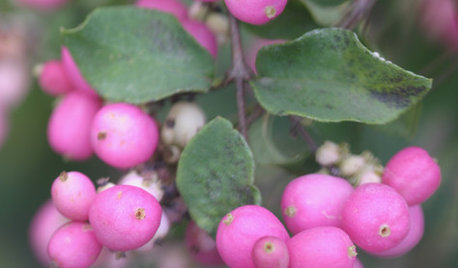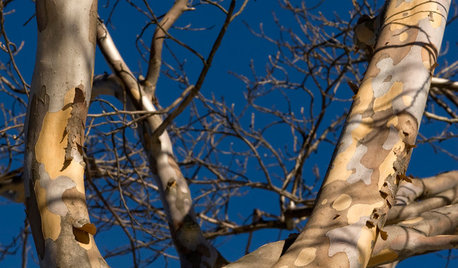Planting trees and shrubs in winter
natalie4b
12 years ago
Related Stories

TREESHow to Buy Healthy Trees and Shrubs
A healthy young plant with a strong form is more likely to do well in your yard. Here’s what to look for at the nursery
Full Story
GARDENING FOR BIRDSFeed the Birds: 6 Plants for Abundant Winter Berries
Be kind to your fair feathered friends during lean food times by planting a shrub or tree loaded with nutritious snacks
Full Story
LANDSCAPE DESIGN5 Berry-licious Shrubs to Plant Now for Winter Interest
Showy color during snow season? You bet. These shrubs will wake up a garden with colorful berries when other plants are asleep
Full Story
GARDENING GUIDES8 Deer-Resistant Elegant Evergreen Shrubs to Plant This Fall
Who knew that such beautiful shrubs could be deer-resistant?
Full Story
GARDENING GUIDESGreat Design Plant: Kumquats for a Juiced-Up Winter
Grow it for the edible fruit or its good looks alone. This citrus cousin will brighten any gray winter day
Full Story
FALL GARDENING9 Deer-Resistant Flowering Shrubs to Plant This Fall
These exquisite shrubs will attract your attention but won’t tempt the deer that roam your neighborhood at night
Full Story
TREESGreat Design Plant: Coral Bark Japanese Maple, a Winter Standout
Go for garden gusto during the chilly season with the fiery red stems of this unusual Japanese maple
Full Story
GARDENING GUIDESPrunus Virginiana Thrives Under Deciduous Trees
Plant chokecherry for showy white flowers favored by native bees in spring, and to provide nesting habitat and food for birds
Full Story
WINTER GARDENING8 Gorgeous Trees for Winter Interest in the Garden
Intriguing forms and beautiful branches take center stage when color heads back into the wings of the winter landscape
Full Story
GARDENING GUIDES8 Native Shrubs for Year-Round Bird Feeding
It’s not just about berries. These plants provide insects for birds and seasonal interest for gardeners
Full Story





Iris GW
natalie4bOriginal Author
Related Professionals
Maple Valley Landscape Architects & Landscape Designers · Wilmington Landscape Contractors · Centereach Landscape Contractors · East Hanover Landscape Contractors · Fort Atkinson Landscape Contractors · Peoria Landscape Contractors · Agoura Hills Fence Contractors · Bonney Lake Fence Contractors · Framingham Fence Contractors · Homestead Fence Contractors · Park Ridge Fence Contractors · Troutdale Fence Contractors · Glen Burnie Window Contractors · Hudson Window Contractors · Pedley Window Contractorsbrandon7 TN_zone7
natalie4bOriginal Author
frannyflowers
girlgroupgirl
opal52
brandon7 TN_zone7
natalie4bOriginal Author
railroadrabbit
Iris GW
brandon7 TN_zone7